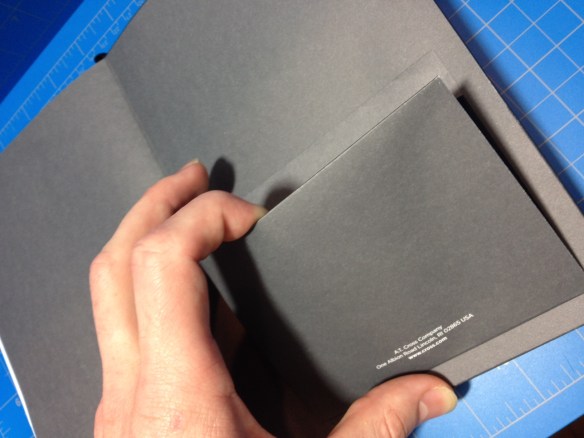Perhaps I lose a little bit of “reviewer credibility” when I say that my main notebooks for years have been Moleskine ones (specifically hardcover pocket and large). I know they’re not the best notebooks in the world, and I am phasing them out of my routine (since I’ve mostly stopped with specific daily uses, and uniformity is less of an issue for a while) but they are widely available, simple, and consistent books of decent quality. That being said, the ones I use have always been hardcover, and at this (192 page) size I prefer the rigidity of a hard-back, but am I being unfair to the softcover books?


First off, all Moleskines come with a wrap-around paper “package”, and I’ll admit, my book is old enough I don’t know where it went, but I assume now they have updated it to the same useless “reusable” packaging that has vague blanks about travel to fill in if that floats your boat. The cover itself is a nice, flexible (black) pleather wrapped around the book in a single piece. On the back “Moleskine®” is stylishly stamped near the bottom and the elastic band is attached at two points. The cover has a pleasant texture that is relatively even and doesn’t scratch easily, but does show the binding and attachment points underneath and impressions from the elastic closure. It also easily divots and is structurally weak at the corners.


Inside is the same-old Moleskine stuff: a “belongs to” page at the front, a cheap ribbon bookmark (mine unravel more and more often these days), and a sturdy pocket in the back that I’ve never personally found a use for. The paper is a pleasant off-white with a nice smooth (but not slick) texture that takes ballpoints and pencil very well (if you’re using it one sided {so no 192 pages, as advertised}). With anything more significant you get a lot of show-through, and with fountain pens or markers you’ll get bleed-through. I find it pleasant to write or sketch on, and the fact that it’s acid-free means your work is safe over time, but it is fairly fragile stuff (I wouldn’t erase too much).

In the end it’s what I expected, the same Moleskine quality with a cover that is more easily bent and damaged (I do care about how my books look). It will probably hold up to most types of use, but it won’t look pretty at the end (the pocket at the back does mean it maintains support for off-the-table use, though). It’s a fine notebook, with decentness all-around, from page feel to binding, but it seems like less and less of a deal as things progress. One can find books at WalMart (potentially of dubious archival-quality) that do the same things cheaper these days, and they might not have the same quality control, but they are so much cheaper. I like the Moleskines for their ubiquity and uniformity, but they’ve always been overpriced, and this cover just doesn’t do it for me.

















